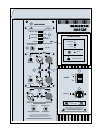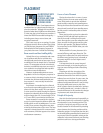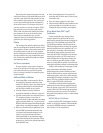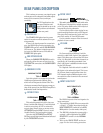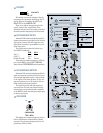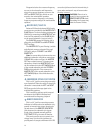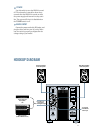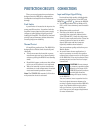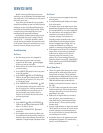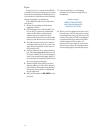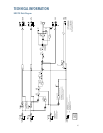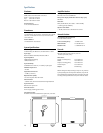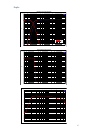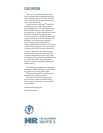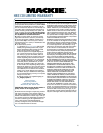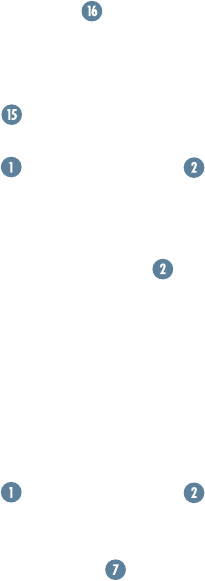
13
SERVICE INFO
Bad Sound
• Is the input connector plugged completely
into the jack?
• Is it loud and distorted? Reduce the signal
level at the mixer.
• If possible, listen to the signal source with
headphones plugged into the preamp stage.
If it sounds bad there, it’s not the subwoofer.
• Too much bass or not enough bass? Move
around the room and see if the bass
response changes. It’s possible your
listening position coincides with a room
mode where the low frequencies either
become exaggerated or nulled. If so, try
moving the subwoofer to a different
position, or moving your listening position.
• If the signal source is an LFE or subwoofer
output from a home theater preamplier,
make sure the signal level for the low-
frequency output is turned up in the
preamp. If you have connected the low-
frequency signal to the LEFT (and RIGHT)
INput, make sure the FILTER BYPASSED
switch is pushed in.
Noise/Hum/Buzz
• Check the signal cable between the mixer/
preamp and the subwoofer. Make sure all
connections are secure. These problems
usually produce crackling noises, hum, or buzz.
• If connecting an unbalanced output to the
HRS120 balanced input, make sure the
shield is connected to both pins 1 and 3 on
the XLR.
• If a CATV cable is connected to the system,
try disconnecting it. If the hum goes away,
call your cable carrier to check for proper
grounding of the cable.
• Make sure the signal cable is not routed
near AC cables, power transformers, or
other EMI sources (including wall warts
and line lumps!). These sources usually
produce hum.
• Is there a light dimmer or other triac-based
(SCR) device on the same AC circuit as the
monitor? Dimmers cause buzzing noises.
Use an AC line filter or plug the subwoofer
into a different AC circuit.
• If possible, listen to the signal source with
headphones plugged in. If it sounds noisy
there, it’s not the subwoofer.
Details concerning Warranty Service are
spelled out on the Warranty Card included with
your subwoofer (if it’s missing, let us know and
we’ll rush one to you).
If you think your subwoofer has a problem,
please do everything you can to confirm it before
calling for service, including reading through
the following Troubleshooting section. Doing
so might save you from deprivation of your
monitor and the associated suffering.
Of all Mackie products returned for service
(which is hardly any at all), roughly 50% are
coded “CND” — Could Not Duplicate, which
usually means the problem lay somewhere else
in the system. These may sound obvious to you,
but here are some things you can check:
Troubleshooting
No Power
• Our favorite question: Is it plugged in?
• Make sure the power cord is securely
seated in the IEC socket
and plugged
all the way into the AC outlet.
• Make sure the AC outlet is live (check with
a tester or lamp).
• Is the POWER
switch on the rear panel
in the ON position?
• Is the POWER
LED or BYPASSED
LED on the rear panel illuminated? If not,
make sure the AC outlet is live. If so, refer
to “No Sound” below.
• If the POWER LED or BYPASSED
LED
is not illuminated, and you are certain that
the AC outlet is live, it will be necessary to
have the HRS120 serviced. There are no
user-serviceable parts inside. Refer to
“Repair” at the end of this section to find
out how to proceed.
No Sound
• Is the POWER LED or BYPASSED
LED on the rear panel illuminated? If not,
refer to “No Power” above.
• Is the INPUT SENSITIVITY
control
turned up?
• Is the signal source turned up? Make sure
the signal level from the mixing console (or
whatever device immediately precedes the
subwoofer) is high enough to produce sound.



